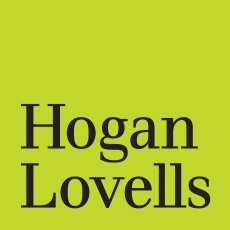In this hoganlovells.com interview, Hogan Lovells partner Dr. Chris Mammen looks at the platforms that could emerge to dominate and drive the internet of things (IoT) space and the related patent and licensing issues that will emerge.
“This is a very exciting and rapidly developing time where control over the IP is going to lead to the power to frame the discussion and influence the market,” said Mammen.
How important is IP to the successful evolution of the internet of things?
Mammen: Control of the intellectual property (IP) around the IoT is going to be a major factor in how the IoT comes together and what platforms ultimately emerge. This is a pattern we saw develop in the mobile telecommunications industry. I think we may be on the verge of seeing similar IP-focused competition in the IoT space.
There are many industry sectors that have IoT emerging markets. In the utilities space, we see smart grids and smart meters; in automotive, we are increasingly seeing connected cars; and in the consumer products industry there are all kinds of things happening like smart lighting, kitchen gadgets, and thermostats. Even farming is turning towards the IoT.
What are the core technologies powering the internet of things?
Mammen: There many different technology areas fueling the IoT. To illustrate this breadth, I like to focus on five in particular. The first core technology area is the sensors, processors, and other hardware used in the IoT. The second is the transmitters, hubs, servers, and repositories used to share the data and connect the devices. The third set of core technology is the interfaces for humans to interact with these devices. The fourth is data — there is lots and lots of data being generated by all of these devices and their interactions. And lastly, there are the analytics and algorithms for making sense and useful determinations out of all that data. Each of these core technologies is an area that is ripe for IP development.
What are some of the more common patent law question associated with the internet of things?
Mammen: Some of the issues that arise are questions of platforms — how many platforms will there be governing the IoT? What kind of platforms will there be? And what technologies will be driving them? Other questions include whether or not there will be standards-essentials patents (SEP). Will we see the development of new standard-setting organizations? And will the standards-essential patents be governed by FRAND obligations? Will that whole body of patent law come into play?
There are questions around how we will handle licensing and IP valuation. We have billions or hundreds of billions of separate devices, each using a little bit of technology or using a lot of different technologies. The licensing questions could be very complex indeed. Where a single device has tens, hundreds, or even thousands of different patented technologies — how are we going to value those and navigate our way through the patent thicket?
Looking ahead, what types of IoT platforms could emerge? What role will IP play in the different models?
Mammen: One of the key features of development of platforms is the quest for or the question of control over the ecosystems. This has implications for physical products and also for control over and access to the data that’s generated within the platform. Some IoT platforms are based on existing technologies, such as Wi-Fi and Bluetooth. Others are repurposed, such as Blockchain, which is the technology behind cryptocurrencies like bitcoin. And there may be new proprietary IoT platforms that are developed — perhaps special purpose, low-power mesh networks that are designed to deal with the particular needs of IoT communications.
Will there be IoT-specific standards-essential patents?
Mammen: When we look to the question of IoT-specific standards-essential patents, there are a range of options. It may be possible to develop a platform based on open-source technology. Meaning there is relatively less IP at the platform level and lower royalties. There may be a standards-essential context with the standards built around proprietary technology. This would be dependent on the structure of standards-setting organizations. Another option might be proprietary platforms, where there is concentrated control over the ecosystem. This would be a higher-royalty environment. Under this approach, it would be harder to establish single-platform dominance.
What kinds of licensing challenges can companies expect?
Mammen: Some of the issues in licensing relate to the fact that it’s highly diffuse. There are many kinds of participants in the ecosystem — from components manufacturers, to OEMs, and to consumers — in a wide variety of industries. So there may be very complex issues about licensing. It may be that there’s a need to develop and even further refine low-transaction cost methods of licensing. And anytime that you look at this type of a network environment, divided infringement issues arise — particularly if you look at patents that patents are drafted to cover multiple parts of a transaction.
How will valuation shake out?
Mammen: For the consumer market, it may be that although there is a very large market — the particular devices may be more commodity value and there may be significant issues of royalty stacking. In industrial or specialized circumstances there may be more limited market volumes and higher per-unit valuations. That’s also something to consider as we think about how IP and patents are going to influence the IoT.



